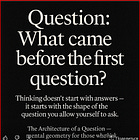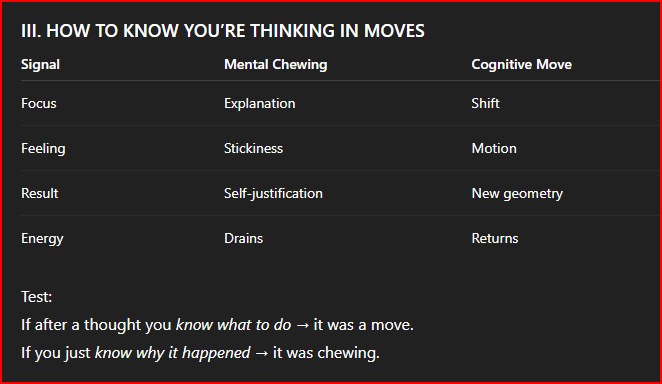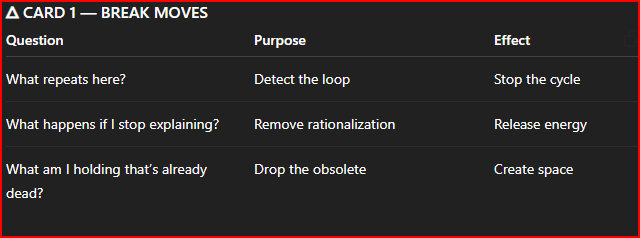ARCHITECTURE OF THOUGHT II — THINK IN MOVES (a field manual for turning thinking into motion)
How to turn thinking from explanation into motion.architecture-of-thought-2-think-in-moves
You don’t think your way out of a loop — you move your way out.
This is a manual for cognitive motion: how to think in breaks, turns, and builds.
The beginning of the cycle is here
You don’t get stuck because you’re lost.
You get stuck because you’re static.
The mind explains — the move shifts.
Thinking isn’t a noun.
It’s a sequence of moves:
break → turn → build.
When you treat thought as motion, paralysis ends.
You stop asking why and start asking where next.
I. THE PRINCIPLE — A THOUGHT IS A MOVE
A thought that doesn’t move the geometry is just commentary.
A move changes coordinates.
To think in moves means:
Stop defining and start shifting.
Stop explaining and start reconfiguring.
Stop “understanding yourself” — start changing the system you’re in.
Thought = transition, not position.
You can’t “understand” your way out of a loop.
You can only move out of it.
II. THREE TYPES OF COGNITIVE MOVES
1. BREAK MOVES — rupture the loop
Purpose: destroy repetition.
Question: What keeps repeating here?
Effect: a pause appears — space for something new.
2. TURN MOVES — rotate perspective
Purpose: change reference frame.
Question: How does this look from the other side?
Effect: new logic, fresh connections.
3. BUILD MOVES — assemble structure
Purpose: connect fragments into a system.
Question: How do these parts relate?
Effect: coherence, synthesis, forward direction.
Break releases energy.
Turn redirects it.
Build stabilizes it.
V. THE ALGORITHM — HOW TO THINK IN MOVES
Fix the point: “Where am I now?” (fact, not story)
Find the loop: “What keeps repeating?”
Make the break: remove one variable — point of view, context, assumption.
Make the turn: ask from the opposite direction.
Build new: form a new what, how, and under what conditions.
Fact → Loop → Break → Turn → Build.
That’s the entire architecture of mental motion.
V. FIELD CARDS
VI. THE LANGUAGE OF MOVEMENT
Every question is a move.
Every move is a small rebellion inside the system of thought.
The mind that explains stays in place.
The mind that moves redraws its map.
Thinking in moves isn’t analysis — it’s navigation.
That’s what separates a loop from a strategy.
What’s your next move — not in life, but in thought?








Fascinating!